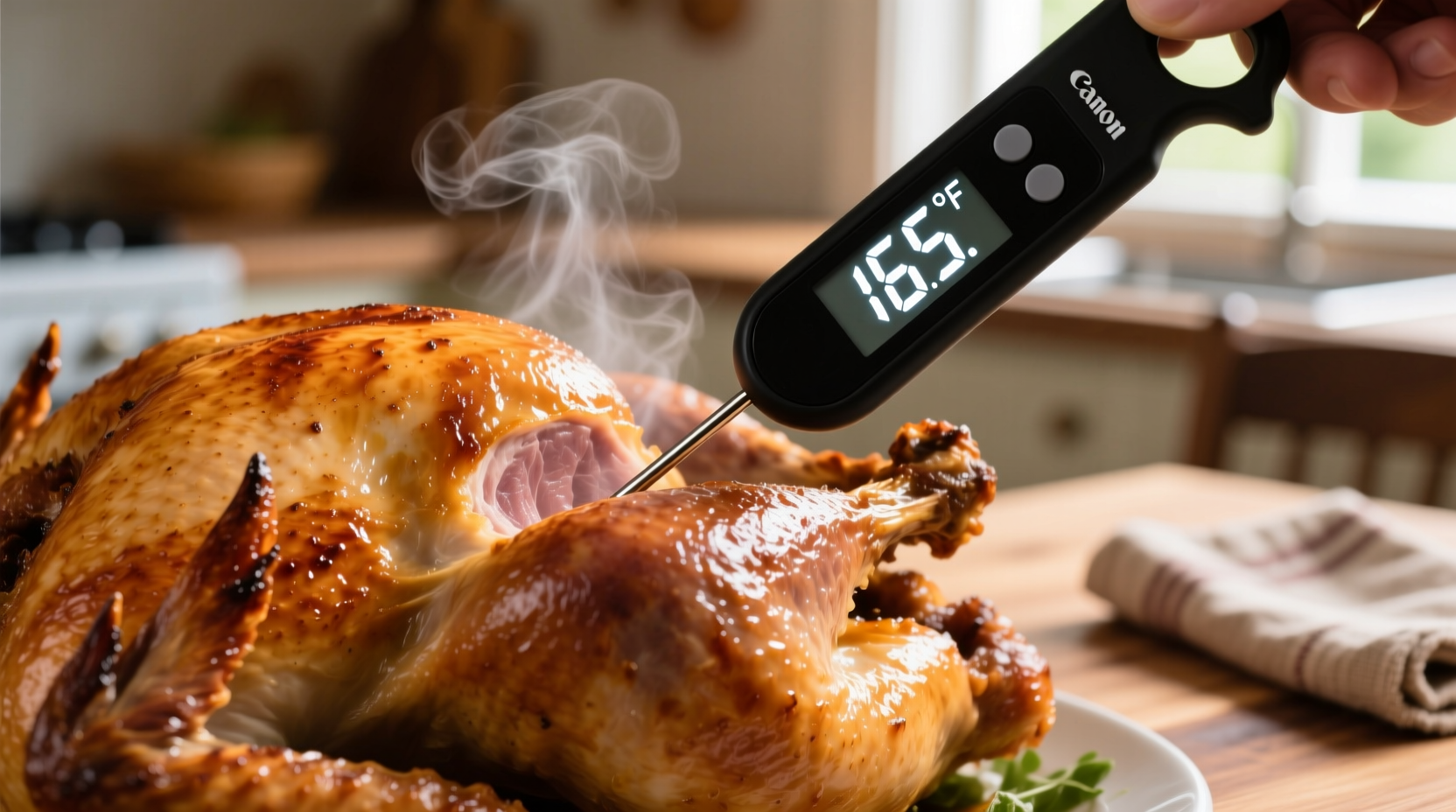Your Complete Guide to Perfectly Cooked Turkey Temperature
Cooking turkey to the proper temperature isn't just about doneness—it's a critical food safety requirement that prevents foodborne illness while delivering the best possible eating experience. Millions of home cooks each year risk serving undercooked poultry or end up with dry, overcooked turkey simply because they don't understand the precise temperature requirements.Why 165°F Is the Magic Number
Understanding the science behind turkey cooking temperatures transforms your holiday meals from risky experiments to culinary successes. The U.S. Department of Agriculture's Food Safety and Inspection Service (FSIS) established 165°F as the minimum safe internal temperature because this is the point where harmful bacteria like salmonella and campylobacter are instantly destroyed.
| Temperature | Result | Food Safety Status |
|---|---|---|
| 150°F | Pink meat, potential moisture | Unsafe - bacteria survive |
| 160°F | Mostly white, slightly pink | Risky - bacteria may survive |
| 165°F | White meat, no pink | Safe - bacteria eliminated |
| 175°F+ | Dry, stringy texture | Safe but overcooked |
Where and How to Measure Turkey Temperature Correctly
Many home cooks make critical errors when checking turkey temperature that compromise both safety and quality. Proper thermometer placement is essential:
- Insert your thermometer into the thickest part of the thigh, avoiding contact with bone
- Check the innermost part of the wing and the thickest part of the breast
- For stuffed turkeys, verify the center of the stuffing reaches 165°F
- Take multiple readings in different locations to ensure even cooking

Understanding Oven Temperature vs. Internal Temperature
Many people confuse oven temperature with the turkey's internal temperature. For optimal results:
- Standard roasting: 325°F oven temperature (most reliable for even cooking)
- High-heat method: Start at 425°F for 30 minutes, then reduce to 325°F
- Low and slow: 275°F-300°F for more even cooking but longer time
The oven temperature creates the cooking environment, but only the internal temperature determines safety and doneness. Never rely on pop-up timers as they often trigger at 180°F-185°F, resulting in dry meat.
Timing Guidelines by Turkey Weight
While internal temperature is the only reliable indicator, these time estimates provide helpful benchmarks. Always verify with a thermometer regardless of cooking time:
- 8-12 pounds: 2¾ to 3 hours
- 12-14 pounds: 3 to 3¾ hours
- 14-18 pounds: 3¾ to 4¼ hours
- 18-20 pounds: 4¼ to 4½ hours
- 20-24 pounds: 4½ to 5 hours
These times assume an unstuffed turkey roasted at 325°F. Add 30-45 minutes for stuffed turkeys. Remember that factors like starting temperature (chilled vs. room temperature), oven accuracy, and rack position significantly affect cooking time.
Avoiding Common Temperature Mistakes
Based on USDA consumer surveys, these temperature-related errors cause most turkey disasters:
- Mistake: Relying on color instead of temperature
- Solution: Breast meat can appear white at 150°F but still be unsafe
- Mistake: Not calibrating your thermometer
- Solution: Test in ice water (32°F) or boiling water (212°F at sea level)
- Mistake: Checking temperature too frequently
- Solution: Open oven no more than 2-3 times during cooking
The Critical Resting Period
Many cooks make the fatal error of carving immediately after reaching 165°F. Proper resting allows for:
- Temperature equilibrium: Heat redistributes from outer to inner layers
- Carryover cooking: Internal temperature rises 5-10°F during resting
- Juice retention: Muscle fibers relax, trapping moisture
Cover your turkey loosely with foil and let it rest for 20-40 minutes (depending on size) before carving. This crucial step transforms potentially dry turkey into moist, tender perfection while ensuring food safety through continued bacterial destruction during the temperature plateau.
Special Considerations for Different Cooking Methods
While 165°F remains the safety standard, different cooking techniques require specific temperature approaches:
- Smoked turkey: Maintain smoker at 225°F-275°F, monitor internal temperature carefully
- Spatchcocked turkey: Cooks faster—check temperature 30 minutes earlier than standard
- Deep-fried turkey: Requires precise oil temperature control (350°F) alongside internal checks
- Sous vide turkey: Can be cooked at lower temperatures (145°F-150°F) for extended periods with proper safety protocols
For traditional roasting—which accounts for over 85% of home turkey preparation—the standard 165°F guideline with proper thermometer usage delivers the safest and most reliable results.
Essential Tools for Perfect Turkey Temperature
Investing in the right equipment makes all the difference:
- Digital instant-read thermometer: Provides accurate readings in 3-5 seconds (Thermapen recommended)
- Leave-in probe thermometer: Monitors temperature continuously without opening oven
- Oven thermometer: Verifies your oven's actual temperature (most ovens are inaccurate)
According to Consumer Reports testing, digital thermometers consistently provide the most reliable readings, with误差 of less than 2°F when properly calibrated. Analog thermometers often vary by 10°F or more, creating significant food safety risks.











 浙公网安备
33010002000092号
浙公网安备
33010002000092号 浙B2-20120091-4
浙B2-20120091-4